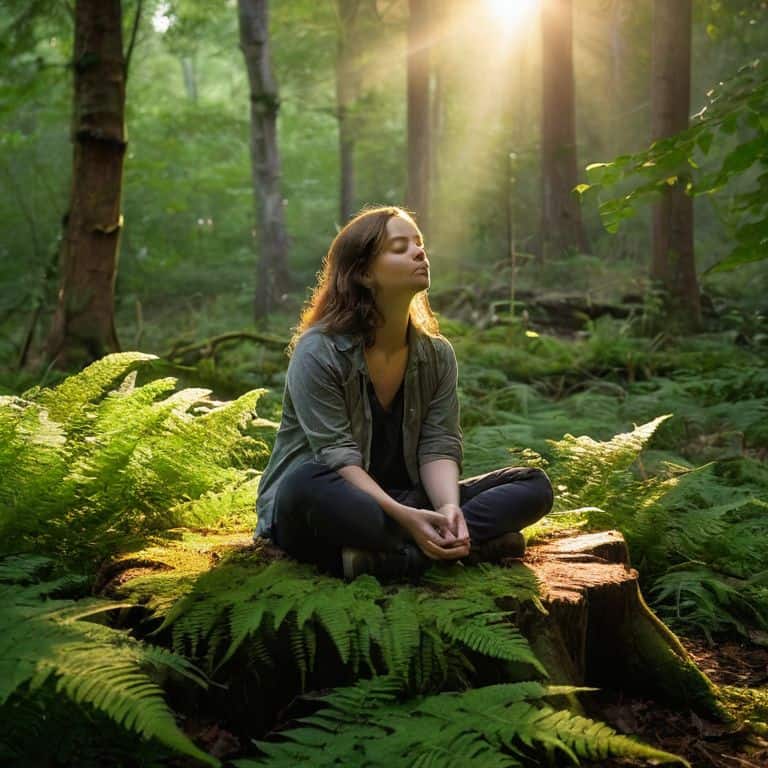I still remember the feeling of burnout I experienced from being constantly connected – that’s why I’m passionate about helping you understand the importance of a digital detox. It’s a topic that’s often surrounded by hype and unrealistic expectations, but I believe it’s time to cut through the noise and focus on what really works. As someone who’s been in the trenches of digital marketing, I’ve seen firsthand how a never-ending stream of notifications and emails can lead to physical and mental exhaustion. It’s time to take a step back and reassess our relationship with technology.
In this article, I promise to offer you a no-nonsense guide to taking control of your digital life. I’ll share my personal story of burnout and recovery, and provide you with practical tips and strategies for implementing a digital detox that actually works. My goal is to help you build a healthier relationship with technology, one that prioritizes your well-being and allows you to recharge and refocus. I’ll cut through the myths and misconceptions surrounding digital detoxes, and offer you a realistic and achievable path to a more balanced life.
Table of Contents
Finding Balance

As I reflect on my journey, I realize that finding balance in our digital lives is crucial. This is where strategies for reducing social media addiction come into play. By setting boundaries and prioritizing self-care, we can mitigate the negative effects of excessive screen time. For me, this means scheduling non-negotiable rest time in my digital calendar and color-coding it to ensure I stick to it.
In my experience, mindfulness practices such as meditation and restorative yoga have been instrumental in helping me cope with the demands of the digital age. By incorporating these practices into our daily routines, we can better navigate the impact of technology on mental health. I’ve seen firsthand how these practices can help reduce stress and increase productivity, allowing us to maintain a healthier relationship with our devices.
To achieve this balance, it’s essential to develop digital literacy and understand how to use technology in a way that supports our well-being. This might involve setting limits on our social media use, taking regular breaks from our screens, or engaging in activities that bring us joy and fulfillment. By taking these steps, we can create a more sustainable and balanced digital lifestyle, one that nourishes our minds, bodies, and spirits.
Breaking Free From Negative Effects
As I reflect on my journey, I realize that constant connectivity was a major contributor to my burnout. I was trapped in a cycle of endless notifications, always-on mentality, and the pressure to constantly produce content. To break free, I had to acknowledge the negative impact of screens on my mental health and take intentional steps to disconnect.
By establishing boundaries and prioritizing self-care, I was able to reclaim my time and focus on what truly nourished my mind, body, and soul. This journey taught me the importance of recognizing the subtle yet profound effects of digital overload and taking proactive steps to mitigate them, ultimately leading to a more balanced lifestyle.
Mindfulness in the Digital Age
As I guide my clients through their digital detox journeys, I’ve noticed a common thread – the struggle to stay present in a world that’s constantly buzzing with notifications. Practicing mindful moments throughout the day can be a powerful antidote to this sense of overwhelm. By taking a few deep breaths and focusing on the present, we can begin to break free from the grip of our screens.
I recommend incorporating gentle stretches into your daily routine, particularly after periods of intense screen time. This simple act can help signal to your brain that it’s time to transition into a more relaxed state, making it easier to stay mindful and focused on the world around you.
The Importance of a Digital Detox

As I reflect on my own journey, I realize that embracing digital detox was a crucial step in reclaiming my mental and physical well-being. The negative effects of excessive screen time had taken a toll on my life, leaving me feeling drained and disconnected. By setting boundaries around my technology use, I was able to rediscover the joys of silence, nature, and human connection.
In today’s digital landscape, it’s easy to get caught up in the cycle of social media addiction, constantly comparing our lives to curated online profiles. However, this can have severe consequences on mental health, including increased stress, anxiety, and feelings of inadequacy. By prioritizing mindfulness in the digital age, we can begin to break free from these toxic patterns and cultivate a more authentic, compassionate relationship with ourselves and others.
As we navigate the complexities of our digital world, it’s essential to recognize the impact of technology on mental health and take proactive steps to mitigate its effects. By incorporating strategies for reducing social media addiction and practicing digital literacy, we can create a healthier, more balanced relationship with technology and reclaim our lives from the grip of screens.
Healing With Meditation and Mindfulness
As I guide my clients through their digital detox journey, I often recommend incorporating mindfulness meditation into their daily routine. This practice has been instrumental in my own burnout recovery, allowing me to cultivate a sense of calm and clarity in the midst of chaos. By dedicating just a few minutes each day to mindfulness meditation, individuals can begin to reclaim their mental space and develop a healthier relationship with technology.
Through regular meditation practice, individuals can learn to recognize the signs of burnout and take proactive steps to mitigate its effects. I encourage my clients to start small, setting aside just a few minutes each day for silent reflection or guided meditation. As they become more comfortable with the practice, they can begin to notice the subtle shifts in their thoughts, emotions, and behaviors, ultimately leading to a more balanced and fulfilling life.
Reducing Social Media Addiction
As I reflect on my own journey, I realize that mindful social media use is crucial in reducing our reliance on these platforms. By being more intentional with our online interactions, we can begin to break free from the constant stream of information and comparisons that can fuel feelings of anxiety and burnout.
To start, I recommend setting a digital curfew, where you avoid screens for a certain period before bed. This simple habit can help you disengage from the digital world and create space for more meaningful activities, such as reading, meditation, or simply spending time with loved ones.
5 Essential Steps to Reclaim Your Life from the Digital Grip
- Set a daily ‘no screen’ time to create space for self-reflection and relaxation
- Schedule a weekly digital detox day, where you avoid all digital devices for at least 12 hours
- Implement a ‘one screen at a time’ rule to minimize multitasking and reduce mental fatigue
- Create a bedtime routine that doesn’t involve screens, to improve sleep quality and increase energy levels
- Designate a ‘tech-free zone’ in your home, such as the dinner table or living room, to promote face-to-face interaction and reduce distractions
Key Takeaways for a Sustainable Digital Life
I’ve learned firsthand that taking control of your digital habits is crucial for maintaining energy and motivation in your career – start by identifying your personal triggers for burnout and develop a plan to mitigate them
By incorporating mindfulness practices such as meditation and restorative yoga into your daily routine, you can improve your ability to focus and reduce stress, leading to a healthier relationship with technology
Remember, a digital detox is not a one-time event, but rather an ongoing process of setting boundaries and prioritizing self-care – commit to scheduling non-negotiable rest time and stick to it, just as you would any other important appointment
Embracing Digital Freedom
By unplugging from the constant stream of digital noise, we can rediscover the beauty of silence, cultivate a deeper sense of self, and ultimately, find the balance and clarity needed to thrive in our personal and professional lives.
Gabriela Rossi
Embracing a Healthier Digital Lifestyle

As we’ve explored the importance of a digital detox, it’s clear that finding balance in our increasingly digital lives is crucial. We’ve discussed the need to break free from negative effects of excessive screen time, and how practices like mindfulness in the digital age can help us stay grounded. By reducing our social media addiction and incorporating healing with meditation and mindfulness, we can begin to reclaim our time and energy. It’s about making small, sustainable changes that add up over time, rather than trying to overhaul our habits overnight.
As you consider your own digital detox journey, remember that it’s okay to start small. Taking control of your digital life is a process, and it’s one that requires patience, compassion, and self-awareness. By embracing a healthier digital lifestyle, you’ll not only improve your own well-being, but also become a more present and engaged member of your community. So take a deep breath, put down your devices, and join me in cultivating a more mindful, balanced approach to life in the digital age.
Frequently Asked Questions
How can I balance my need for digital connectivity with the desire to disconnect and prioritize my well-being?
For me, it’s about setting intentional boundaries – like scheduling device-free hours and color-coding rest time in my calendar. By prioritizing self-care and making time for mindfulness practices, you can create a healthier relationship with technology and find a sense of balance that nourishes your mind, body, and soul.
What are some practical strategies for implementing a digital detox in my daily life without feeling disconnected from important work or personal responsibilities?
To implement a digital detox, I recommend starting small: schedule device-free hours or days, and use website blockers to minimize distractions. Set clear boundaries with work and personal responsibilities by automating responses or notifications, and prioritize face-to-face connections to stay grounded.
Can a digital detox really have a lasting impact on my mental and physical health, or is it just a temporary solution?
I’ve seen it firsthand – a digital detox can be a powerful catalyst for lasting change. By taking a break from the constant stream of notifications and distractions, you can quiet your mind, recharge your energy, and develop healthier habits that stick, leading to improved mental and physical well-being over time.
